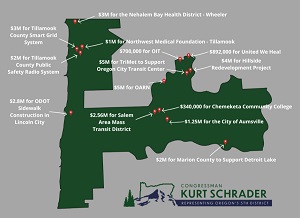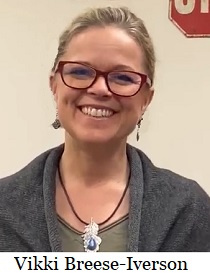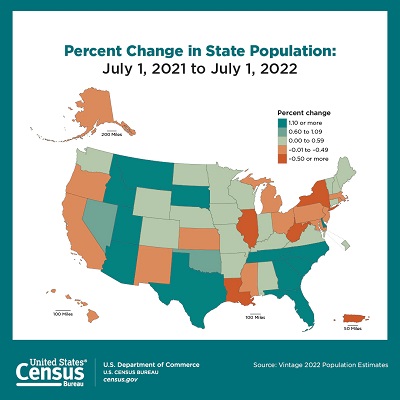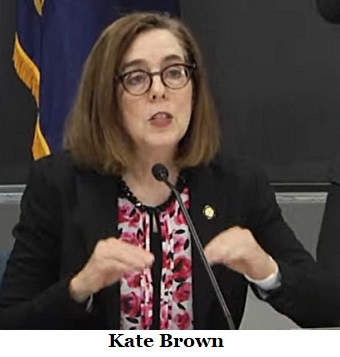
On this day, August 27, 2019, jet-car speed racer 30-year-old Jessi Combs, known by fans as the "fastest woman on four wheels," died in a crash in the Alvord Desert in Southeastern Oregon while trying to break a speed record.
 Post an Event
Post an Event
| Benton County Republicans’ Private Fundraising Event, “Bent-on Boots and Bling” with Trey Taylor |
| Friday, September 5, 2025 at 5:00 pm |
| Featuring Trey Taylor
Music Private Event
Friday, September 5, 2025 5:00-5:30 pm VIP Reception
5:30-8:00 pm Heavy Appetizers,
Auction, Concert
Red: $750 VIP Reception
Front Row Table Sponsor
White: $500 Table Sponsor
Blue: $50 per person
Limited Seating. Get Yours Now!!!
Support Local
Dress up: Bling, Cowboy, Patriotic Benton County Republican
FUNDRAISER
www.BentonGOP.org
Get your tickets today at:
https://www.bentongop.org/event-details/benton-county-republicans-fundraiser/form
About Trey:
Trey is the youngest African American Man in Country Music History. The Denver Post wrote
"It's impossible to miss his enthusiasm. With a fondness for cowboy boots, gaudy colors and dazzling jewelry, Trey Taylor could stand toe to toe with any of the Pop, Country or even Rap
contemporaries of his generation.“ |
| Trysting Tree Golf Club, 34028 NE Electric Rd., Corvallis |
OEA priorities don’t include students
The Oregon Education Association is governed by 44 teachers across the state that school boards have hired to teach students what the school board deems appropriate. OEA is losing strength as parents fight back against curriculums. Are teachers more invested in their union than teaching students?
OEA lists their
priorities as:
- Class size – claiming Oregon has large class sizes and inadequate school funding even though class sizes have continued to be reduced and funding is near the top in the nation.
- Disrupted learning – students lack adequate support and students are coming to school hungry even though breakfast is now served at public schools. They view facing parents’ complaints as threatening. OEA wants legislation on policies that will support safe and supportive learning environments and working conditions that leave parents in the dark.
- Restoring programs and positions – restore art, music and physical education programs and positions that support students, such as custodians, bus drivers, teachers, and educational assistants.
- Protecting our jobs – salaries are higher for all employees because the union has the power to beat back attacks on educator benefits, protect jobs and make progress.
OEA focused on their own interests and supported the passage of
SB 744 in 2021 that suspended essential skills graduation requirements through 2024. In 2022, they fought against two attempts at increasing enrollees for virtual charter schools, and fought against cuts to the Corporate Activities Tax raising the cost of living for all parents.
OEA supported an exemption and removal of federal minimum requirements of standardized testing contributing to Oregon ranking near the bottom. They supported removing safety officers out of schools, legal representation for families navigating the immigration system, increased health care benefit for part-time faculty, increased funding for grants, and purchase of Elliot Forest.
OEA has a coordinated system for teachers to address complaints from parents as harassment when it goes viral in the community over a lesson or homework assignment for its equity standards or social justice curriculum. They want to make this legislation.
A D V E R T I S E M E N T

A D V E R T I S E M E N T
Nationally, a recent declaration by American Federation of Teachers Randi Weingarten during a virtual educator’s event, praised Joe Biden as a hero for schools. “What you have done for American education…has been more than any president - even FDR.â€
The Associated Press reported Biden’s education results as: “Math and reading scores for 9-year-olds in the US fell between 2020 and 2022 by a level not seen in decades, a foreboding sign of the state of American education two years after the Covid-19 pandemic began.†The results were from the “Nation’s Report Card,†part of the National Assessment of Educational Progress long-term trend reading and math exams.
Biden seems to care more about the teacher unions, which donated more than $12 million to Biden and Democrats, than he does school children. Even though OEA dues does not support candidates, members have contributed $800,000 in each of the last two elections, and they endorse the Democrat ticket.

Seeing a visible attack against parents,
Oregon Moms Union was founded in 2021 to help organize parents to fight for their kids’ right to a quality education. Their priority is to ensure school boards, school districts and elected officials are open and responsive to the voice of parents in their children’s education. Mobilizing parents to take an active role to ensure kids always come first.
Electing enough school board members that support these goals will roll up to OEA as their board is replaced with teachers that support their local school boards and parents. Teachers are not required to join OEA and OEA isn’t required to support the Oregon State Board of Education. However, both organizations seem to coordinate efforts that the Oregon Moms Union sees as needing reform.
--Donna Bleiler| Post Date: 2022-12-29 10:22:27 | Last Update: 2022-12-29 11:22:21 |
U.S. shows increase in population growth
The
U.S. Census Bureau’s Vintage 2022 national and state population estimates an increase in change after a historically low rate between 2020 and 2021.
The primary driver of growth was the addition of 1,010,923 people migrating internationally into the U.S., representing 168.8% over 2021. “There was a sizeable uptick in population growth last year compared to the prior year’s historically low increase,†said Kristie Wilder, a demographer in the Population Division at the Census Bureau. “A rebound in net international migration, coupled with the largest year-over-year increase in total births since 2007, is behind this increase.â€
The West experienced growth in 2022, second to the South having the highest resident population. The West gained 153,601 residents (0.2% total resident population) with Washington State and Arizona picking up the slack for losses in both Oregon and California losing -233,150 residents through net domestic migration. A natural increase of 154,405 largely accounted for the growth in the West.
In 2022, 26 states and the District of Columbia had births outnumbering deaths, with Texas (118,159), California (106,155) and New York (35,611) having the highest natural increase. The remaining 24 states experienced negative natural change, or natural decreases.
Where does Oregon stand? Oregon is sixth in numeric decline losing -16,164 (-0.4%) in 2022, including -5,089 less births than deaths. Domestic migration was a -17,331 but a positive 7,026 international migration for a net of -10,305. The biggest loser in the West was California losing -113,649, which is a -0.3% of residents.
All 50 states and the District of Columbia saw positive net international migration with California (125,715), Florida (125,629) and Texas (118,614) having the largest gains.
The biggest gains from net domestic migration last year were in Florida (318,855), Texas (230,961) and North Carolina (99,796), while the biggest losses were in California (-343,230), New York (-299,557) and Illinois (-141,656).
The Population Estimates Program uses current data on births, deaths and migration to calculate population change since the most recent decennial census date and produce a time series of estimates of population, demographic components of change, and housing units.
A D V E R T I S E M E N T

A D V E R T I S E M E N T
The
American Economic Review 2022, 112(11) reports that standard economic models show that growth is driven by people discovering new ideas, which is driven by the size of the population. A larger population means more researchers which in turn leads to more new ideas and to higher living standards. The negative natural and domestic growth in Oregon should be of primary concern for the 2023 legislative session.
When population growth is negative, models produce what is called the Empty Planet result. Knowledge and living standards stagnate and the population gradually vanishes. If the economy switches to an optimal growth pattern soon enough, it can become a balanced growth path with sustained exponential growth. An ever-increasing population benefits from ever-rising living standards. But if the economy waits too long to switch, even the optimal patterns can be trapped with negative population growth, and the flow of new ideas goes to zero, depreciation of knowledge leads to declining living standards, and an even a more dire outcome.
--Donna Bleiler| Post Date: 2022-12-28 10:09:08 | Last Update: 2022-12-28 11:55:38 |
Buried in 4000 pages is bad news for small businesses
The $1.7 trillion 2023 fiscal year Omnibus Appropriations bill is headed for the President’s signature. This bill makes the biggest federal changes to retirement savings since the 1980s. The pension “Reform†places a big burden on small businesses.
While the deficit continues to rise and America enters a recession, Representative Kurt Schrader claims, “This bipartisan, bicameral government funding package will create good-paying jobs, grow opportunities for the middle class and small businesses, and provide a lifeline for working families in Oregon.†Could he be referring to the boost in federal hiring in the bill? But he does claim to have secured over
$33 million for 14 projects in his district.

However, buried in 4000 pages is bad news for small businesses. It forces employers in all states to automatically enroll new workers in a 401k plan, even an employer with as few as 11 employees will be required to shoulder the administrative burden only to allow employees to withdraw the money.
It might be good news for workers in that it also relaxes requirements for workers to access their money and reduces the excise taxes on those who don't follow the federal formula.
A D V E R T I S E M E N T

A D V E R T I S E M E N T
The bill increases discretionary spending by $135 billion above 2022 spending levels for a total of $1.7 trillion with $772.5 billion headed to domestic agencies and $858 billion for defense. It provides $44.9 billion in emergency assistance to Ukraine and NATO allies, and $40.6 billion in emergency funding to assist communities recovering from drought, hurricanes, flooding, wildfire, natural disasters and other disasters.
Will funding have positive returns and long-term impact on society, the environment and the performance of business to qualify as ESG-investing umbrella? It seems that a lot of horse-trading went on to reach an agreement so this congress could pass next year’s funding and block what the next congress might want or need to do.
--Donna Bleiler| Post Date: 2022-12-27 22:21:02 | Last Update: 2022-12-27 14:50:32 |
Newberg election clinches a majority for conservatives
In the Supplemental Election held December 20th a conservative block won control of the Newberg City Council defeating three incumbents. As with the last two school board elections, results show citizens saw the need for change.
The new City Councilors will join incumbent conservative Mike McBride to create a majority. In the November 8th General Election, Bill Rosacker defeated progressive incumbent mayor Rick Rogers. The combination of a new Mayor and a new majority on City Council portends substantial changes in policy. Handling of the homeless crisis and Urban Renewal work will be two visible actions.
The results were:
- City of Newberg Councilor for District 2 At-Large, Peggy Kilburg defeated Casey Banks by 3,482 votes to 2,390.
- City of Newberg, Councilor for District 4 At-Large Robyn Wheatley defeated Jefferson Mildenberger by 3,282 votes to 2,898.
- City of Newberg, Councilor for District 6 At-Large Derek Carmon defeated Stephanie Findley by 3,546 votes to 2,618.
On the ballot in the May 2023 election for Newberg will be five positions for Newberg School Board and three positions for the Chehalem Parks and Recreation Board. Campaigning began on December 21st with both conservatives and progressives working hard to get out the vote.
--Tom Hammer| Post Date: 2022-12-27 10:54:53 | Last Update: 2022-12-27 14:52:53 |
Nearly 80% of Oregonians oppose tolling
Assistant Director of the Oregon Department of Transportation Travis Brouwer presented the ODOT budget through the year 2029 at a recent meeting of the Mid-Willamette Valley Area Commission on Transportation. ODOT has two budgets. Transportation Projects and Maintenance and Operations. Transportation Projects are paid for primarily from grants. Maintenance and Operations relies on revenues from state sources. 5% of Maintenance and Operations comes from the Federal government “Fund Exchange Programâ€. Those are from IIJA Infrastructure Investment and Jobs Act dollars. Currently all maintenance and operations are fully funded but that is expected to change soon.
ODOT projects a budget deficit starting in fiscal 2023-2024. By 2029 ODOT projects the accumulated deficit to be near $400 million. ODOT is exploring increases in fees coupled with diminishing Maintenance and Operations work on roadways. Brouwer says cities and counties will have to do the majority of work on their own roads in the future.
State government has doubled in size in the last 10 years while the population of Oregon has gained 10.6%. Portland is currently experiencing a net outflow of population. The number of roadways has remained constant to serve the increase in population. Projects have improved traffic flow on existing roadways. Maintenance and Operations dollars have maintained existing roadways with increased revenues going to implement policy favoring alternatives to automobiles and to fuels that address an unquantified need to address climate change assumed to be global warming. ODOT added social equity to Maintenance and Operations. ODOT has an inelastic response to projected changes in revenues. Layoffs haven’t been mentioned.
Tolling of I-5 and I-205 from south of Wilsonville to Vancouver may be on the November 2024 ballot if IP-4 gains the necessary 200,000 valid signatures by June of 2024. Polling on tolling found that nearly 80% of Oregonians oppose tolling. All 16 state representatives and senators with districts touching Clackamas County have spoken out against tolling. ODOT will not wait for the results of a vote on tolling to begin work on its implementation. If tolling is not permitted after November 2024 how much will ODOT have spent to develop the infrastructure necessary for tolling? How many will have been hired and trained to administer the program? How many planning dollars will have been spent to map out changes to 82nd and 122nd to make them more pedestrian friendly as an adjunct to tolling?
A D V E R T I S E M E N T

A D V E R T I S E M E N T
Preliminary estimates were that 60% of revenues from tolling would go toward the expense of administering the program. Much of the balance would go to altering surface streets that might otherwise handle toll avoidance overflow. Consumer spending is the driver of our economy. No economic impact study has been attempted to determine the effects removing tolling dollars from consumer’s pockets will have on the economy. A 50 page report by ODOT details in percentages from 0-100% the sliding scale of toll rates that will apply to Oregonians of various income levels.
Brouwer claims that Portland is the last major metropolitan area not tolled. With the exception of some bridges and tunnels, that claim could easily be disputed. ODOT plans an additional lane each way on a two mile stretch of I-205 south of Oregon City as a benefit of tolling. That part of I-205 has not changed in the 50 year history of the freeway and has been a bottleneck for decades. Brouwer claims that resistance to tolling fades in time as citizens come to appreciate the positive effects it brings.
Since Portland area PERS employees are all permanently working from home now their 25,000 sq.ft. building on SW 72nd in Tigard is vacant. ODOT employees don’t feel safe working in downtown Portland. They will vacate their downtown Portland office and move into the former PERS space on SW 72nd soon. Even though the PERS building is not well served by mass transit it does have a large parking lot.
--Tom Hammer| Post Date: 2022-12-24 06:44:19 | Last Update: 2022-12-23 21:36:25 |
Teachers respond negatively
Students across the state participated in programs for Transgender Awareness Week to help raise visibility and awareness about transgender people and address issues that they face. In the Tigard-Tualatin school district, the schedule and unit plan indicate this was more than educational information.
Parents were notified of Transgender Awareness Week in a newsletter posted, but it made no mention of the activities and lesson plans. Students only needed to have their teacher's permission to get out of class, a parent’s permission was not required even for activities after school hours for making signs to hang around schools.
A Watch Party of the TV Show titled “First Day†took place in which twelve-year-old Hannah Bradford adjusts to school while dealing with the pressures of her gender identity.
The initial presentation was “Talking About Pronouns†with 78 gender identities and experiences of transgender and non-binary folk. The five-lesson slide presentation focused on empathy over hate lessons:
- What is hate speech? What is empathy? Intent vs impact, stereotypes, and how hat speech has evolved over time.
- Empathy stories and compassionate empathy.
- Identities. What is my identity? Social vs self-construct vs genetics.
- What can I do? How to call out, call in, and interrupt.
- Activism choice project. Create a project that calls people into action.
Students in the “community†are asked to self-evaluate their feelings and suggest they take a risk and listen with empathy, acceptance, and nod and take note of what others have to say.
A D V E R T I S E M E N T

A D V E R T I S E M E N T
They are taught that hate speech includes fearful attitudes against a particular group, race, religion or identity that is degrading. Exercises identified historical origination of race identifications that over time has taken on a derogatory connotation that has become a racist insult. To make it confusing, only members of those communities can say slur racist words without being hate speech.
The focus of the lesson appears to create empathy understanding and share the thoughts with compassion for underprivileged and transgender students that stirred them to take action. It might be a worthwhile lesson until the slide show identified the privilege as being “white, straight, wealthy man experiences more privilege than a black, trans woman.†The benefits a person gets is based on how close they are to this dominant culture. That lesson defines and asks the students to identify:
- Gender – cis, trans, non-binary, gender-fluid, inter-sex.
- Sexual orientation – LGBTQQIPP2SAADON-B.
- Race – divided into different groups based on physical characteristics that they are perceived to share.
- Ethnicity – cultural identification.
- Religious Beliefs – beliefs around finding meaning in the world.
- Other identifiers: appearance, abilities, Neuro-typical-divergent, social class/wealth, nationality/citizenship, age, language, trauma.
The lesson concludes by encouraging students to be an advocate. “The world is a dangerous place to live. Not because of the people who are evil, but because of the people who don’t do anything about it.†That is used to motivate students to report what they perceive as hate speech they hear even if not directed at them. Students are asked to pledge to be an advocate.
In classes, lessons on social justice are being passed off as social studies and language arts. Students identify injustices including white privilege and express what they learn in art and language forms. Classical reading has been replaced with readings like ‘On Cracking White City,’ ‘Member of the Club,’ and ‘For My People’ poem.
Reactions from teachers that reached out to Northwest Observer were negative. One said they wouldn’t teach the material because “It was very biased, not educational/researched based, and contradictoryâ€. Another teacher felt “uncomfortable teaching the material due to religious beliefs.†And another said, “Students are struggling academically in Oregon. Teachers are working hard to catch students up after Covid. Having students pulled from classes to engage in non-research based, biased political documentary is concerning.â€
Jeanette Schade, high school teacher and university adjunct professor, works with teachers nationally and says Oregon is the epicenter and they all agree Oregon is the worst. She summarized the issue by adding, “I was appalled that students would be missing valuable instructional time to attend a showing of ‘First Day’. I am seeing a huge decline in analytical reading and writing skills. We can blame it on things like COVID lockdowns where children were not allowed to step foot in their schools to learn, but it runs deeper than that. My high school classes are supposed to be sacred learning space to learn skills to do well in post-secondary education or their future career, but it is being hijacked to allow them to watch tv shows or movies on social and political issues of the day. Parents need to get more involved and understand that they have more power if they stand together with one voice. Parents need to say 'No, my child needs to learn how to read and write more than about social political issues' and not allow schools to take over their roles as parents. We are seeing massive decline in reading, writing, and arithmetic skills across the board. When will people wake up and understand we have an educationally declining country?â€
--Donna Bleiler| Post Date: 2022-12-24 06:20:18 | Last Update: 2022-12-25 14:27:23 |
Plus forgiveness of debt
Governor Kate Brown issued an
order that remitted uncollected court fines and fees associated with certain traffic violation cases that resulted in debt-based driver’s license suspensions. This action creates a path for nearly 7,000 Oregonians to seek reinstatement of their suspended driver’s licenses through the DMV, and removes the associated collateral burdens that disproportionately impacted low-income Oregonians and people of color from a state statute that has since been rewritten.
Passed in the first Special Session in 2020,
HB 4210 was sponsored by Governor-Elect Tina Kotek in an attempt to address protestors demand for police reform. The bill acknowledges that suspending driver’s licenses for nonpayment can set off a cascade of compounding harms impacting people’s lives and livelihoods, particularly for low-income Oregonians. While that legislation prohibited license suspensions for nonpayment of traffic fines moving forward, it left existing nonpayment-related license suspensions in place. Governor Brown’s action goes beyond reinstating driver’s license, she also granted these individuals forgiveness of the debt.
“The inability to pay a traffic fine should not deprive a person of the ability to lawfully drive to work, school, health care appointments, or other locations to meet their daily needs,†said Governor Brown. “We know that suspending driver’s licenses for unpaid traffic fines is bad public policy — it is inequitable, ineffective, and makes it harder for low-income Oregonians to get ahead. My action today will help alleviate the burden of legacy driver’s license suspensions imposed under a statutory scheme that the legislature has since overhauled.â€
A D V E R T I S E M E N T

A D V E R T I S E M E N T
Governor Brown’s remission order affects only those people who were sanctioned in traffic violation cases over two years ago, prior to the effective date of HB 4210. The order expressly excludes misdemeanor or felony traffic offense cases, and it does not forgive restitution and compensatory fines owed to victims. Beyond nonpayment-related sanctions, none of the affected individuals have suspended licenses due to public safety-related sanctions.
Approximately $1,800,000 was forgiven from circuit court cases in Oregon. The total amount of unpaid fines and fees that was remitted from cases in Oregon municipal and justice courts is unknown because neither the DMV nor the Oregon Judicial Department (OJD) has access to this information.
The vast majority of the fines and fees forgiven by the Governor’s order are considered uncollectible debt. According to OJD, about 84% of the liquidated debt on its books is uncollectible. Much of the debt forgiven by the Governor’s remission order is held by OJD. Their collections data show that most people who can afford to pay their violation fines do so right away, but for cases like those included in the Governor’s order, collections rates drop to roughly 10% in the second year of delinquency, and to 4% or lower in year three and beyond. Much of the debt forgiven by the Governor’s remission order has remained unpaid for three or more years and, as a result, is considered uncollectible.
If you believe that your driver’s license should be reinstated as a result of the Governor’s remission order, you may contact DMV at (503) 943-9000.
--Donna Bleiler| Post Date: 2022-12-23 16:40:05 | Last Update: 2022-12-23 18:12:38 |
We appreciate our readers
Christmas is a time for love, hope, happiness and excitement. The Staff and Reporters at Northwest Observer send lots of PEACE and JOY to you, our readers, and your families.
Have a
Merry
Christmas!
--Staff Reporters| Post Date: 2022-12-23 16:30:43 | Last Update: 2022-12-23 18:09:03 |
Considering running for office but don’t know where to start?
The Oregon Secretary of State is inviting people to join the Oregon Elections Division for a training on what it takes to get on the ballot, how to get in the voters’ pamphlet, and how to navigate all the ins-and-outs of campaign finance reporting.
Navigating Elections Filings
Virtual via Zoom
Part 1: January 11, 2022, 5:30 - 7 p.m.
Part 2: January 18, 2022, 5:30 - 7 p.m.
The next election is already around the corner, and deadlines are coming up fast. People are invited to join a training by the Secretary of State Elections Division on navigating election filings. This training is for anyone interested in running for office or being a part of a campaign, whether they’re looking for a refresher or this is their very first time. The Elections Division encourages candidates, fundraisers, treasurers, and anyone involved in campaigning to join.
Spots are limited so interested people are encouraged to be sure to
sign up soon.
--Staff Reports| Post Date: 2022-12-23 06:37:56 | Last Update: 2022-12-23 17:28:21 |
“Oregonians everywhere deserve better than big, blanket mandates from unelected bureaucratsâ€
Following California’s lead the Environmental Quality Commission adopted an Advanced Clean Cars II Rule, effectively banning the sale of new gas-powered vehicles by 2035 and requiring manufacturers to follow suit.
Senator Fred Girod (R-Stayton) and Senator Lynn Findley (R-Vale) released the following statement:
“This action was taken covertly behind closed doors by administrative rule using the Governor’s executive order , usurping authority from the Legislature. It appears to be a clear violation of separation of powers. DEQ is an agency that has gone amuck and shows a desperate need for administrative oversight. Almost all states require legislative oversight of administrative rule. That’s why I’m prepared to introduce legislation in the upcoming session doing just that,†said Senator Girod.
“Additionally, we have so much forest set aside in Oregon that the amount of carbon being sequestered by our forests comes close to compensating for the carbon shortfall that this new rule is intended to address. I plan to introduce legislation which would mandate that the stored carbon in Oregon’s forests be included in carbon emissions calculations,†concluded Girod.
 “Oregonians everywhere deserve better than big, blanket mandates from unelected bureaucrats and interim directors,†said Senator Findley, who sits on the Joint Committee on Transportation. “This is an issue that requires greater input from the public and legislative review before being acted upon. Taking that authority away only exacerbates distrust in our state agencies.â€
“Oregonians everywhere deserve better than big, blanket mandates from unelected bureaucrats and interim directors,†said Senator Findley, who sits on the Joint Committee on Transportation. “This is an issue that requires greater input from the public and legislative review before being acted upon. Taking that authority away only exacerbates distrust in our state agencies.â€
The Environmental Quality Commission voted to approve the Advanced Clean Cars II Rule at a special meeting on Monday, December 19th. The rule is based on vehicle emissions standards adopted by California in August.
The ban will not affect cars already on the road or the purchase of used gas-powered cars but will require those interested in purchasing a new gas-powered vehicle to take their business outside of Oregon. This rule is based on vehicle emission standards adopted by the State of California in August.

“This is the latest out of touch example of what our state agencies and commissions have become,†said Leader Breese-Iverson. “Once again, as Governor Brown’s days in office are winding down, she is working to solidify her progressive legacy without being held accountable. While this decision will disproportionately hurt working-class Oregonians, it also ignores the unrealistic and short-sighted goals of the battery powered manufacturing industry.â€
“Unelected bureaucrats should not be making decisions for everyday Oregonians,†said Representative Boshart Davis, Vice Chair of the Joint Committee on Transportation. “Governor Brown continues to be the least popular governor in America because she chooses to put her ideology over what is best for Oregon. The Oregon House Republicans will continue to be a voice for hardworking Oregonians who don’t feel as though they have one.â€
In 2020, Governor Brown signed
Executive Order 20-04 which directed state agencies to drastically reduce emissions by 2035. In 2021, Governor Brown set the most unrealistic timeline for moving to unreliable electricity sources in the United States -- driving up costs for low- and middle-class families.
--Staff Reports| Post Date: 2022-12-21 10:59:58 | Last Update: 2022-12-21 11:37:56 |
Requires All New Vehicles to be Zero Emissions by 2035
The Oregon Department of Environmental Quality under the direction of Interim Director Leah Feldon has announced its
Advanced Clean Cars II Proposed Rule which center around making the sale of internal combustion engines illegal by the year 2035.
The newly proposed rules are an update to
an existing rule containing a leviathan list of definitions.
In a presentation to the legislature, The DEQ says that "These rules are a critical component to achieving state’s GHG reduction goals" and that these rules are "Closely linked to other DEQ programs" including Climate Protection Program, Clean Fuels Program and Advanced Clean Trucks
According to the presentation, the rules can be summarized:
- EVs must have a minimum electric range
- Battery Electric Vehicles – 150 miles
- Plug in Hybrid Electric Vehicles – 50 miles
- Durability – 80% of certified range value for 10 yr/150,000 mi
- Warranties – for parts and battery state of health (maintain 70-80% of battery range for life of vehicle)
- Charging cord capability (Level 1 and 2 capable)
- Increased charger size capability (to allow for faster charging)
- Battery labeling
- Address battery recycling

The
proposed rule is merely an update of the list of definitions from the current rule as well as the "cut-and-paste" adoption of California Non-Methane Organic Gas Test Procedures. It will limit and ultimately ban the sale of internal combustion engine vehicles by the year 2035 -- a mere 12 years from now.
The included graph shows the expected decline in sales and "on-road" operation of internal combustion vehicles in Oregon in future years. Experts have questioned the expectations behind the graph and the resulting trends portrayed.
--Staff Reports| Post Date: 2022-12-21 06:36:47 | Last Update: 2022-12-20 15:51:59 |
If we have the Secret Ballot because we don’t trust the government, why do we trust the government to count our Secret Ballots?
Election fraud has been with us for a very long time. A hundred fifty years ago, a Democrat organization called Tammany Hall ran New York City with graft, fixed elections, and street power. For almost a century, Tammany hand-picked the political leaders, with elections a mere formality.
In Georgia in 1962, Jimmy Carter struggled against widespread election fraud and the entrenched political machine. He proved his case in court and won a re-election.
The tricks for fixing elections are many: Artificial migration, disenfranchising voters through such devices as poll taxes and literacy tests, division of opposition support, intimidating voters, disinformation, vote buying and coercion, misleading or confusing ballot papers, ballot box stuffing, misrecording the votes, misuse of proxy votes, destruction or invalidation of ballots, electronic systems fraud, voter impersonation, ballot harvesting, registration of fake voters, ballot box stuffing--each a separate technique tuned to the times.
Many of those methods depend on a corrupt county organization: When the election staff is part of the government, anything can happen.
My wife and I spent some hours observing the County staff processing ballots during this election. We were lucky to be on a shift when temporary workers were being briefed and trained, so we could be trained in parallel.
This County usually receives more than a third of a million ballots by mail. That is a staggering number, easily said but difficult to comprehend. 333,000 inches is longer than five miles. 333,000 miles is the distance to the moon and halfway back. If one person tabulated that many ballots, one per minute, eight hours per day, he would finish the count in about two years.
How was ballot counting done before the age of computers?
The solution was borrowed from our friends, the ants. No single ant tries to dig a nest and build an anthill by herself. If the colony contains a million ants, half a million will undertake the project, one grain of sand at a time. The nest must be large to house many ants, but the size of the colony defines the workforce. The problem of providing for a large ant colony leads directly to the solution with a large supply of ant-power.
Similarly, before we had computers, no single person attempted to count all the ballots. The counties were divided into precincts, and each precinct had one or more polling stations. Each polling station was staffed with volunteers to manage the voting and count the ballots.
The impossible anthill was manageable when undertaken by hundreds of willing hands, often producing an election result (in those distant times) within 12 hours.

I have observed a manual recount of ballots for selected precincts by a team of twelve workers with parity for opposing parties. On that scale, manual ballot counting for each position was 90 minutes of work.
The poll workers of old were comparable to jury members, drawn from the ordinary population, rather than government employees or teams of workers supervised by government employees. They were members of the community who came forward to enact the will of the community, where the majority of good will (hopefully) suppressed the minority of ill intent. The workers were paired from opposing parties so that no single individual need be trusted.
The station was set up in a public hall or a church. On entry, the voter was checked off on the voting list and issued a ballot. The voter went into a privacy stall, marked the ballot, dropped it in the sealed box, and left. Workers were stationed around the room to discourage funny business. In many localities, the pubs were closed to keep the voters sober. And as of 2014, seven states (Alaska, Indiana, Kentucky, Massachusetts, South Carolina, Utah, and West Virginia) still banned the sale of alcohol on election day.
When we say "secret ballot," we mean that no one knew how any particular voter marked his ballot. If a mobster attempted to bribe or intimidate a voter, the mobster could not verify that the voter followed through—because the voting was always done in the private booth (Secret A). And if a poll worker attempted to identify a ballot with a particular voter for later punishment or reward, identification was not possible because the ballots in the box were anonymous (Secret B).
With the small precinct and local workers, many of the voters were personally known to the workers and the chance of a voter registering to multiple precincts was reduced. It wasn't eliminated, but neither was any other form of secret double-dealing, such as bigamy.
Having hundreds of years of experience to draw on, the architects of our system knew that governments could not be trusted to conduct honest elections. When the mayor counts the ballots for the mayoral election, he enjoys a long and comfortable term of office and is rarely voted out.

In modern day, computers and "trust your government" propaganda have changed many things, and not all for the better. The mountains of ballots for all the precincts in the County are dumped into one office. They are zipped through high-speed sorting and computing machines operating on invisible instructions. Like a man at the carnival running a super pea-in-shell game, the size and speed of the operation defy meaningful observation.
The voter registration lists, though maintained by computer, are demonstrably error-prone. In one informal study conducted recently in Oregon, 26% to 30% of the households polled had "phantom" voters--names that were registered to those addresses even though no such persons were living there. An address within the County would enable a person to vote on a County ballot, but the voter may be out of state or even out of the country, as determined by a second address field in the registration. "One person, one vote" has become "One database entry, one vote." The integrity of that list is totally under the control of the government.
The voter completes the ballot at any time, anywhere. Sitting in the company of a mobster, the voter marks his only ballot, signs the envelope, and hands it over to be mailed by the mobster. Conversely, a group of workers meet their union boss in the pub with their ballots in hand, mark their ballots in company, sign the envelopes, and leave them with the boss to mail. Thus, Secrecy of the Ballot (Secret A) is lost.
At the other end of the process, we now trust the government to count our votes. The ballot contains the votes, and only the envelope contains the voter identification with the signature. Allegedly, once the ballot is removed from the envelope, the relationship is severed and the ballot becomes as anonymous as one dropped in the ballot box of an old-time voting station.
But the devil is in the details. Every ballot in our County has a unique number and bar code. The County Clerk explained to me that the number is generated by the Verity database and no one can map the number back to voter identity once the ballot is removed from the envelope. And even if that were true, I wonder. What prevents the County computer from recording the ballot number with the addressee when the envelope is originally assembled for mailing? We don't know.
Even more alarming, when the signature on the unopened envelope is verified by the elections worker, every state and County record going back decades is displayed for reference, from property records to political party affiliation and social credit score. At that point, a corrupt system could discard the voter's ballot and replace it with a pre-marked dummy to satisfy the audit. Who would know?

Thus, Secrecy of the Ballot (Secret B) is lost in the counting-house. Take note here that I do not accuse anyone of impropriety. But with all these "improvements," the people are obligated to trust the government, and that has rarely turned out well.
However, by maintaining the myth of the secret ballot, the processing is obscured beyond all tracking. Once the ballot is separated from the envelope, all hope of confirming that one's vote was correctly tabulated is also lost. The end-to-end process is concealed from the workers by highly specialized tasks. Observers are baffled by its complexity. The security of the bushels of ballots is guarded only by the lock on the office door—to which the County workers have weekend and midnight keys over the two weeks of processing and producing the election result. The internal operation of the computers is known only to the engineers, who are sworn to secrecy by non-disclosure agreements. The settings on the computers are known only by the technical staff. And the security on the computers is guarded only by the promise that they are not equipped with WiFi.
In Oregon, the whole process is so complex, the descriptive manual is 90 pages long (https://sos.oregon.gov/elections/documents/vbm_manual.pdf).
In simple terms, mail-in ballot elections rest on a fundamental contradiction: If we have the Secret Ballot because we don't trust the government, why do we trust the government to count our Secret Ballots?
--Mark DeCoursey
| Post Date: 2022-12-21 06:29:46 | Last Update: 2022-12-21 11:17:08 |
Read More Articles








 Seeing a visible attack against parents, Oregon Moms Union was founded in 2021 to help organize parents to fight for their kids’ right to a quality education. Their priority is to ensure school boards, school districts and elected officials are open and responsive to the voice of parents in their children’s education. Mobilizing parents to take an active role to ensure kids always come first.
Seeing a visible attack against parents, Oregon Moms Union was founded in 2021 to help organize parents to fight for their kids’ right to a quality education. Their priority is to ensure school boards, school districts and elected officials are open and responsive to the voice of parents in their children’s education. Mobilizing parents to take an active role to ensure kids always come first.














 “Oregonians everywhere deserve better than big, blanket mandates from unelected bureaucrats and interim directors,†said Senator Findley, who sits on the Joint Committee on Transportation. “This is an issue that requires greater input from the public and legislative review before being acted upon. Taking that authority away only exacerbates distrust in our state agencies.â€
“Oregonians everywhere deserve better than big, blanket mandates from unelected bureaucrats and interim directors,†said Senator Findley, who sits on the Joint Committee on Transportation. “This is an issue that requires greater input from the public and legislative review before being acted upon. Taking that authority away only exacerbates distrust in our state agencies.â€
 “This is the latest out of touch example of what our state agencies and commissions have become,†said Leader Breese-Iverson. “Once again, as Governor Brown’s days in office are winding down, she is working to solidify her progressive legacy without being held accountable. While this decision will disproportionately hurt working-class Oregonians, it also ignores the unrealistic and short-sighted goals of the battery powered manufacturing industry.â€
“This is the latest out of touch example of what our state agencies and commissions have become,†said Leader Breese-Iverson. “Once again, as Governor Brown’s days in office are winding down, she is working to solidify her progressive legacy without being held accountable. While this decision will disproportionately hurt working-class Oregonians, it also ignores the unrealistic and short-sighted goals of the battery powered manufacturing industry.â€





